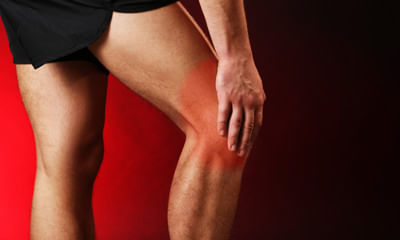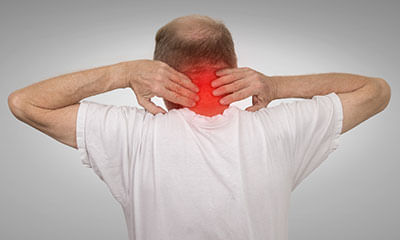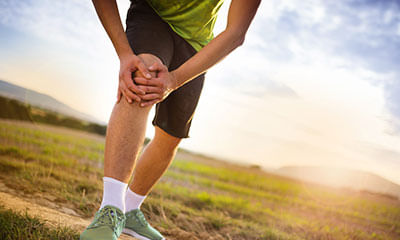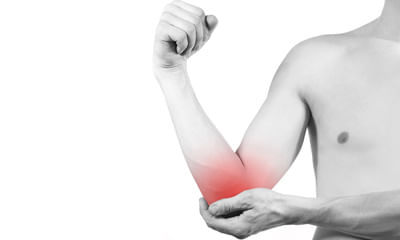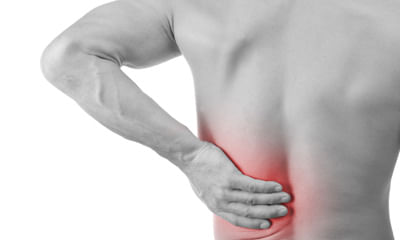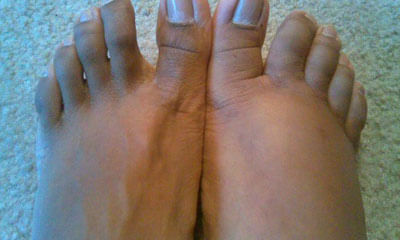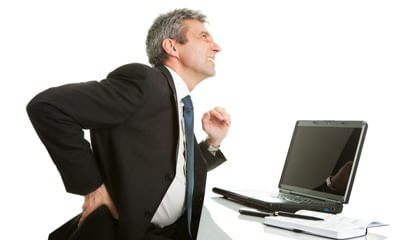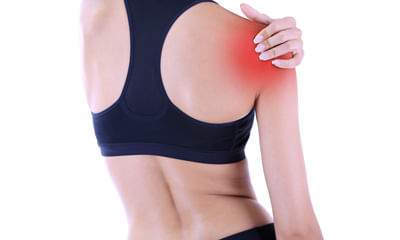Leg Swelling Treatment
I have an injury on my left knee as I slipped on the road. I have used boroline cream. Please suggest the best treatment ...
Ask Free Question
The rice method rice stands for rest, ice, compression, and elevation. Rest. Avoid putting weight on the painful knee. Ice. Use cold packs for 20 minutes at a time, several times a day. Do not apply ice directly on skin. Compression. To prevent additional swelling, lightly wrap the knee in an elastic bandage, leaving a hole in the area of the kneecap. Make sure that the bandage fits snugly and does not cause additional pain. Elevation. As often as possible, rest with your knee raised up higher than your heart. Medication non-steroidal anti-inflammatory drugs (nsaids) such as ibuprofen and naproxen can help reduce swelling and relieve pain. If you pain persists or it becomes more difficult to move your knee, contact your doctor for a thorough evaluation. Prevention quad extension exercise leg extension exercises help to strengthen and stretch the quadriceps, the muscles in the front of the thigh.
Dear sir / madammy son (22) has been diagnosed with ankylosing spondylitis its early diagnosis. His hlab27 is positive. ...
Ask Free Question
Ankylosing spondylitis ankylosing spondylitis is a cause of back pain in adolescents and young adults. Ankylosing spondylitis is a form of chronic inflammation of the spine and the sacroiliac joints chronic inflammation in these areas causes pain and stiffness in and around the spine, including the neck, middle back, lower back, and buttocks. Over time, chronic inflammation of the spine (spondylitis) can lead to a complete cementing together (fusion) of the vertebrae, a process referred to as ankylosis. Ankylosis causes loss of mobility of the spine. Pt treatment deep breathing for lung expansion and stretching exercises to improve spine and joint mobility. Are also advised to sleep on a firm mattress and avoid the use of a pillow in order to prevent spine curvature. Aerobic exercise is generally encouraged as it promotes full expansion of the breathing muscles and opens the airways of the lungs. Home remedies physical therapy for ankylosing spondylitis includes instructions and exercises to maintain proper posture. This includes deep breathing for lung expansion and stretching exercises to improve spine and joint mobility. Since ankylosis of the spine tends to cause forward curvature (kyphosis), patients are instructed to maintain erect posture as much as possible and to perform back-extension exercises. Patients are also advised to sleep on a firm mattress and avoid the use of a pillow in order to prevent spine curvature. Ankylosing spondylitis can involve the areas where the ribs attach to the upper spine as well as the vertebral joints, thus limiting breathing capacity. Patients are instructed to maximally expand their chest frequently throughout each day to minimize this limitation. Physical therapists customize exercise programs for each individual. Swimming often can be a very beneficial form of exercise, as it avoids jarring impact of the spine. Ankylosing spondylitis need not limit an individual's involvement in athletics. People can participate in carefully chosen aerobic sports when their disease is inactive. Aerobic exercise is generally encouraged as it promotes full expansion of the breathing muscles and opens the airways of the lungs. Cigarette smoking is strongly discouraged in people with ankylosing spondylitis, as it can accelerate lung scarring and seriously aggravate breathing difficulties. Occasionally, those with severe lung disease related to ankylosing spondylitis may require oxygen supplementation and medications to improve breathing. People with ankylosing spondylitis may need to modify their activities of daily living and adjust features of the workplace. For example, workers can adjust chairs and desks for proper postures. Drivers can use wide rearview mirrors and prism glasses to compensate for the limited motion in the spine. You should check with your doctor before using compression socks for your swelling. These special socks should be properly fitted for you and your needs. Also, be sure to wear them during the day and remove them before you go to bed. Leg elevation if you stand a lot during the day, try propping your feet up or soaking them in water when you get home to help prevent swelling. Muscle relaxant: reduces muscle tension and helps relieve muscle pain and discomfort. Transcutaneous electrical nerve stimulation (also known as tens) is something which helps ease muscle pain and spasms. You can strengthen the muscles by doing tonificationie. Improving the tone of the muscles by adding either weight cuffs / sand bags which will help you to improve the strength of the muscle.
Hi. How strong is generally reconstructed acl after 8 months of surgery, yesterday 1 of the kids aged 7-8 years old fell ...
Ask Free Question
After acl reconstruction surgery, it typically takes several months for the graft used to replace the torn ligament to heal and integrate with surrounding tissues. During this time, the new acl graft is gradually remodeling and strengthening, but it may not reach its maximum strength until about 12 to 18 months post-surgery. The strength of the reconstructed acl can also depend on factors such as the type of graft used (e.g. Autograft or allograft), surgical technique, rehabilitation protocol, and individual factors such as age, overall health, and adherence to post-operative rehabilitation. In general, after 8 months of surgery, the reconstructed acl may have regained a significant amount of strength and stability, but it may still be vulnerable to sudden forces or impacts, especially during activities involving twisting, pivoting, or direct blows to the knee. If you experienced a fall or trauma to your operated leg, it's essential to monitor for any new or worsening symptoms such as pain, swelling, instability, or decreased range of motion. If you have any concerns or if you experience significant pain or instability, I would recommend consulting with your orthopedic surgeon or healthcare provider for a thorough evaluation to assess the integrity of the reconstructed acl and determine if any further treatment or precautions are necessary. They can provide personalized guidance based on your specific situation and help ensure the best possible outcome for your recovery.
I have knee pain past one month I think itâs of over use! and also I have hereditary of knee pain in family, while sit ...
Ask Free Question
It sounds like you may be experiencing knee pain due to overuse, possibly exacerbated by a hereditary predisposition to knee issues. Here are some steps you can take to manage your knee pain and improve your symptoms: rest and ice: give your knees adequate rest to allow them to recover from overuse. Apply ice packs to the affected area for 15-20 minutes several times a day to reduce inflammation and alleviate pain. Elevate: when resting, elevate your legs to reduce swelling and promote circulation. Avoid high-impact activities: limit activities that put excessive stress on your knees, such as running, jumping, or heavy lifting. Instead, opt for low-impact exercises like swimming, cycling, or walking to maintain fitness without exacerbating knee pain. Strengthening exercises: perform gentle strengthening exercises to improve the stability and support of the muscles around your knees. Focus on exercises that target the quadriceps, hamstrings, and calf muscles, as well as exercises to improve hip and core strength. Stretching: incorporate regular stretching into your routine to improve flexibility and range of motion in your knees. Focus on stretching the quadriceps, hamstrings, calves, and it band to relieve tightness and reduce strain on the knees. Proper footwear: wear supportive and cushioned shoes with good arch support to reduce impact on your knees during daily activities. Weight management: maintain a healthy weight to reduce pressure on your knees and minimize strain. Losing excess weight can significantly alleviate knee pain and improve overall joint health. Hot/cold therapy: alternate between hot and cold therapy to reduce pain and inflammation. Use a heating pad or warm compress to relax muscles before gentle exercise, and use ice packs after activity to reduce swelling and pain. Consider orthotics: if you have flat feet or other foot alignment issues, consider using orthotic inserts or custom-made shoe inserts to provide additional support and alignment for your knees. Consult a healthcare professional: if your knee pain persists or worsens despite self-care measures, consult with a healthcare professional, such as an orthopedic specialist or physical therapist, for a thorough evaluation and personalized treatment plan. They can help determine the underlying cause of your knee pain and recommend appropriate interventions, such as physical therapy, bracing, or other treatments.
I have multiple joint pain due to uric acid. Dr. suggest me zyloric 300. Last 4 years I am taking this medicine. After s ...
Ask Free Question
It is called as rheumatic arthritis. Treatment goals •to protect the joint from further damages. •provide pin relief. •prevent deformity and disabilities. •increase functional capacity. •improve flexibility and strength. •encourage regular exercise. •improve general fitness. Physiotherapy modalities - hot/cold applications- electrical stimulation- hydrotherapy and spa therapy this should be due to the sciatic nerve compression in the right side probably close to your l5 vertebrae. It can also be due to the strain on the left leg, try wearing mcr chappals which would help you to get relieved from pain. Rheumatoid arthritis multiple joint pains / early morning painit is called as rheumatic arthritis. Treatment goals •to protect the joint from further damages. •provide pin relief. •prevent deformity and disabilities. •increase functional capacity. •improve flexibility and strength. •encourage regular exercise. •improve general fitness. Physiotherapy modalities - hot/cold applications- electrical stimulation- hydrotherapy and spa therapy rehabilitation treatment technique - rest and splinting - compression gloves - assistive devices and adaptive equipment - massage therapy - therapeutic exercise - patient education assistive devices and adaptive equipment occupational therapy improves functional ability in patients with ra. Occupational therapy interventions such as assistive devices and adaptive equipments have beneficial effects on joint protection and energy conservation in arthritic patients. Assistive devices are used in order to reduce functional deficits, to diminish pain, and to keep patients' independence and self-efficiency. Loading over the hip joint may be reduced by 50% by holding a cane. In fact, most of these instruments are originally designed for patients with neurologic deficits; therefore, certain adaptations may be needed for them to be used in patients with arthritis. Elevated toilet seats, widened gripping handles, arrangements related with bathrooms, etc. Might all facilitate the daily life. The procedures needed to increase compliance of the patient with the environment and to increase functional independence are +mainly determined by the occupational therapist. Massage therapy that improves flexibility, enhances a feeling of connection with other treatment modalities, improves general well being, and can help to diminish swelling of inflamed joints. Massage is found to be effective on depression, anxiety, mood, and pain. Therapeutic exercise every joint should be moved in the rom at least once per day in order to prevent contracture. In the case of acutely inflamed joints, isometric exercises provide adequate muscle tone without exacerbation of clinical disease activity. Moderate contractures should be held for 6 seconds and repeated 5–10 times each day. Dynamic exercise therapy in improving joint mobility, muscle strength, aerobic capacity and daily functioning in patients with rheumatoid arthritis (ra). Finally, in chronic stage with inactive arthritis, conditioning exercises such as swimming, walking, and cycling with adequate resting periods are recommended. They increase muscle endurance and aerobic capacity and improve functions of the patient in general, and they also make the patient feel better. It might be due to lack of blood circulation which is the reason for you to have scrotum pain / back pain. You have to do basic aerobic exercises for you to become fit and also to maintain the blood circulation and tone. Patient education in patients with ra, sociopsychological factors affecting the disease process such as poor social relations, disturbance of communication with the environment, and unhappiness and depression at work are commonly encountered. The treatment of rheumatic diseases should provide education and information to their patients about their condition and the various physical therapy and rehabilitative options that are available to improve their quality of life. Passive treatments for rheumatoid arthritis •cold therapy reduces circulation, which ultimately decreases swelling. For example, a cold compress may be placed on the painful area. •cold therapy in acute phase •dosage 10-20mints/1-2 times a day. •heat therapy eases muscle tension and gets blood to flow more quickly to the painful area. For example, a moist, warm cloth may be used to promote circulation. •heat therapy in chronic phase •dosage 20-30mints/1-2 times a day. •hydrotherapy involves reducing your ra-related pain and other symptoms with water. With hydrotherapy, you will be submerged in warm water to relieve your symptoms. •massage can help reduce muscle tension and promote good circulation. It's also a fantastic way to help you manage stress (especially important for people with rheumatoid arthritis). •transcutaneous electrical nerve stimulation (tens) works by blocking pain signals from getting to your spinal cord. It also helps decrease muscle spasms. •tens short term pain relief (6 to 18 hrs) •ultrasound creates warmth using sound waves, whichenchanes circulation and decreases joint pain, inflammation, and stiffness. Exercise for acute phase: •preformed exercise at least once a day. •general assisted movement through normal range (joint mobilisation). •isometric-“static movements” helps to maintain muscle tone without increasing inflammation. Exercise for the chronic phase: •can progress the above exercise to include use of light resistance. •postural/core stability exercises. •swimming/walking/cycling to maintain cardiovascular fitness. •gentle stretch for areas that become tight, such as knees &calves. Regular exercises: •maintaing muscle strength is important for joint stability & preventing injury. •muscles can become weak following reduced activity. •pain signals from yours nerves and swelling can both inhibits muscles. •muscle length can be affected by prolonged positions immobilization and tightness can limit daily activities. Alternative therapies: •thi chi. •musical therapy. •yoga therapy. •relaxation techniques.
Doctor, I had an accident in 2014, after taking x-ray, I got l1 compression. After taking 2 months bed rest, it got redu ...
Ask Free Question
Physical examination a thorough physical examination reveals much about the patient's health and general fitness. The physical part of the exam includes a review of the patient's medical and family history. Often laboratory tests such as complete blood count and urinalysis are ordered. The physical exam may include: •palpation (exam by touch) determines spinal abnormalities, areas of tenderness, and muscle spasm. •range of motion measures the degree to which a patient can perform movement of flexion, extension, lateral bending, and spinal rotation. •a neurologic evaluation assesses the patient's symptoms including pain, numbness, paresthesias (e.g. Tingling), extremity sensation and motor function, muscle spasm, weakness, and bowel/bladder changes. Particular attention may be given to the extremities. Either a ct scan or mri study may be required if there is evidence of neurologic dysfunction. Physical therapy which teaches the patient to strengthen the paravertebral and abdominal muscles which lend support to the spine. General exercises which help build flexibility, increase range of motion and strength. A corset or a brace could be used to provide support; cervical collars may be used to alleviate pain by restricting movement. Hot or cold packs on the affected area, ultrasound and electric stimulation are some of the other treatments which are used. Management of acute symptoms rest and support- with acute joint symptoms, a lumbar corset may be helpful to provide rest to inflamed facet joints. When acute symptoms decrease, discontinue corset by gradually increasing the time without the corset. Often the most comfortable position is flexion, esp. If there are neurologic signs due to decrease in the foraminal space from joint swelling or osteophytes. Education of posture- head, neck and shoulders should be supported by the back rest of chair with a small pillow in the lumbar spine, the feet supported and the arm resting on arm rests or on a pillow in the lap. Modalities- hot or cold packs on the affected area, ultrasound and electric stimulation are some of the other treatments which are used to decrease pain and reduce muscle spasm. Relaxation- by soft tissue techniques. Teach self relaxationtechniques, e.g like deep breathing exercises and physiological relaxation (laura mitchell method) and hydrotherapy. Traction- gentle intermittent joint distraction and gliding techniques may inhibit painful muscle responses and provide synovial fluid movement within the joint for healing. Gentle rom within the limits of pain. Management of subacute and chronic phase increase rom- free active exercises of lumbar spine. Pelvic tilting forward, backward in crook lying, quadriped, sitting and standing. Mobilization- restoration of intersegmental mobility by accessory pressure enables the patient to regain full functional painfree movement. Stretching exercises. Strengthening exercises.Posture correction.
Edema problem on right leg and creatinine 1.5 with slow pitting and reddish swelling. ...
Ask Free Question
Edema in the right leg with associated symptoms like slow pitting and reddish swelling, coupled with a creatinine level of 1.5, can be indicative of underlying health issues that need medical attention. Here's a brief overview of what these symptoms might mean: edema: edema refers to swelling caused by excess fluid trapped in your body's tissues. In the legs, it can be due to a variety of reasons, including venous insufficiency, lymphatic issues, or other localized problems. Pitting edema: if the swelling leaves an indent when you press on it (known as pitting), this can be a sign of certain types of fluid retention, often related to circulatory or lymphatic system issues. Reddish swelling: redness and warmth in the swollen area could indicate inflammation or infection. It could also suggest a blood clot, especially if it's localized to one leg. Elevated creatinine levels: a creatinine level of 1.5 is higher than normal for most adults, suggesting impaired kidney function. The kidneys are responsible for filtering waste products from your blood and maintaining fluid balance. Impaired kidney function can lead to fluid retention and edema. Given these symptoms, it's important to seek medical evaluation as soon as possible. The combination of edema, changes in skin color, and elevated creatinine levels can point to significant health issues like kidney disease, deep vein thrombosis, or other circulatory system disorders. A healthcare provider can conduct the necessary examinations and tests, such as blood tests, doppler ultrasound, or other imaging studies, to determine the underlying cause and appropriate treatment. In the meantime, here are some general measures that might help manage symptoms: elevate the leg: keeping the leg elevated above heart level when possible can help reduce swelling. Compression stockings: these can aid in reducing swelling and improving blood flow. Stay hydrated: proper hydration can help kidney function and reduce the risk of blood clots. Limit salt intake: excess salt can contribute to fluid retention. Avoid prolonged standing or sitting: moving around regularly can help with circulation.
I was jogging in a gym 1 week back. But suddenly my left leg got some pain. after that I struggle hard to keep my left l ...
Ask Free Question
Cold compresses can help reduce swelling in the area. Cooling also helps to numb sharp pain. Apply an ice pack for up to 20 minutes, up to five times a day. Use a frozen gel pack, ice cubes in a plastic bag, or a bag of frozen peas. Wrap the cold pack in a soft towel. Do not apply a cold pack directly to skin. Heat therapyheat helps to relax tense muscles and soothe a stiff area. It can help with muscle pain and arthritis in the shoulder. Use a heated gel pack, heating pad or a hot water bottle. Anaemia always leads to the symptoms of being tired that can also be reason to have frequent sprains in the leg once the oxygen levels in the blood comes down it automatically leads to improper functioning of the joints and muscles. Treating a sprained ankle promotes recovery and prevents further discomfort. It’s important not to put weight on the injured area while you’re recovering from an ankle sprain. Home treatments you may be able to treat mild sprains at home. Recommended home care treatments include: •using elastic bandages (such as an ace bandage) to wrap your ankle, but not too tightly •wearing a brace to support your ankle •using crutches, if needed •elevating your foot with pillows as necessary to reduce swelling •taking ibuprofen (such as advil) or acetaminophen (such as tylenol) to manage pain •getting plenty of rest and not putting weight on your ankle it’s also helpful to apply ice to the injured area as soon as you can to reduce swelling. On the first day, you should apply ice every 20 to 30 minutes, three to four times per day. Afterward, apply ice every three to four hours for the next two days. Your doctor may tell you to stay off of your injured ankle until the pain subsides. For mild sprains, this may take a week to 10 days, while more severe sprains may take up to several weeks to heal. How can I prevent an ankle sprain? You can lower your risk for future sprains by: •wrapping the affected ankle in an elastic bandage •wearing a brace, if necessary •performing strengthening exercises •avoiding high heels •warming up before exercising •wearing sturdy, quality footwear •paying attention to surfaces you’re walking on •slowing or stopping activities when you feel fatigued call your doctor right away if you think you’ve sprained your ankle again. When left untreated, an ankle sprain can lead to long-term pain and instability in the.
I had a schwannoma, a benign tumor from right hip to inner groin. It was operated in september. The stitches have healed ...
Ask Free Question
Please do a repeat mri to reveal any anomaly if present based on the same treatment would be suggested.
My leg got twisted this evening and I am experiencing severe pain in ankle I am unable to sleep now. Also my veins poppe ...
Ask Free Question
You may be able to treat mild sprains at home. Recommended home care treatments include: •using elastic bandages (such as an ace bandage) to wrap your ankle, but not too tightly •wearing a brace to support your ankle •using crutches, if needed •elevating your foot with pillows as necessary to reduce swelling •taking ibuprofen (such as advil) or acetaminophen (such as tylenol) to manage pain •getting plenty of rest and not putting weight on your ankle it’s also helpful to apply ice to the injured area as soon as you can to reduce swelling. On the first day, you should apply ice every 20 to 30 minutes, three to four times per day. Afterward, apply ice every three to four hours for the next two days. Your doctor may tell you to stay off of your injured ankle until the pain subsides. For mild sprains, this may take a week to 10 days, while more severe sprains may take up to several weeks to heal.

